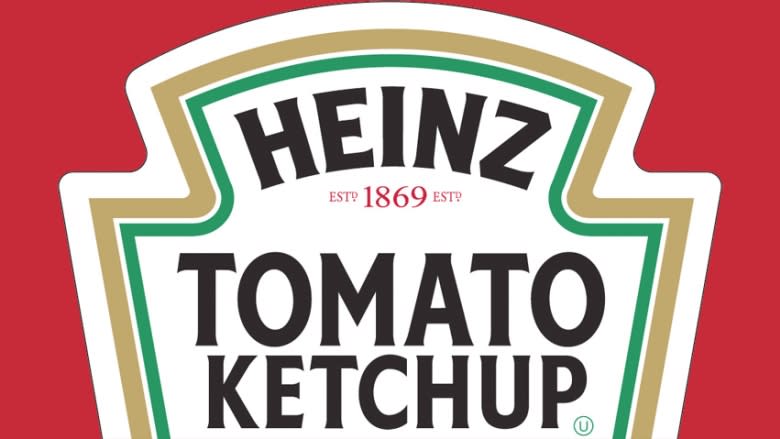Canadian taste test: Do we like it salty or sweet?
What tastes and flavours are particularly appealing to Canadians, that could set us apart from other nationalities?
Let's start with salt, and Canadians' reputation for loving salty food.
Canadians do eat a great deal of salt — too much, as health experts keep telling us.
Too much sodium in the diet causes high blood pressure, the leading risk for death in the world, because it increases the risk for heart disease and stroke, according to the Heart and Stroke Foundation.
"Canada is addicted to sodium," says Sylvain Charlebois, professor of food distribution and policy at the University of Guelph.
He notes that when Campbell Soup Co. brought out lower-sodium versions of its famous canned soup, the new products had sluggish sales. Now Campbell's, which had "positioned themselves as a responsible company trying to provide what's good for Canadians," is dropping the low-salt soup line. Charlebois calls that Campbell's campaign "ineffective."
Consuming too much salt won't set Canada apart from too many countries, research from the group World Action on Salt and Health (WASH) suggests.
Comparing salt content
In 2014, the group compared the salt content of a basket of iconic food brands like Kellogg's breakfast cereals and foods from global restaurant chains like McDonald's, Burger King and KFC.
CBC News reviewed the study data and found some of these Canadian foods ranked high in salt, while others were low. Some foods sold in Canada had more salt than the same product sold in the U.S. but just as often, the U.S. version had more.
Canada did stand out in another WASH survey, on pizza, also for 2014. Of 184 takeout pizzas from six countries, Canadian pizzas had the lowest salt portion in five topping categories.
Those five pizzas all come from Pizza Hut. Interestingly, Pizza Hut also had the highest salt numbers in six topping categories, with five of those pizzas from the U.S. and one from Australia. Take Pizza Hut out of the mix and Canada looks about average on salt content in both takeout and frozen pizza.
For Clare Farrand, WASH's international program lead, the inconsistent international pattern suggests global taste preferences shouldn't be blamed for these differences, and it could lend support to WASH's argument that food processors or restaurants could easily lower salt levels.
While our taste for salt may be innate, scientists should be cautious about cause and effect. If we grow up eating soup high in salt, for example, then we will probably expect soup to taste salty. And if the yogurt we ate had added sugar, then we learned yogurt should taste sweet.
Ketchup high in sugar, salt
Take Heinz ketchup, for example, with four grams of sugar in a tablespoon. Does it have that much sugar because consumers like their ketchup that sweet, or did they learn that's how sweet ketchup should taste from eating it that way?
Heinz, which originates in Great Britain, has 100 mg of salt per tablespoon of ketchup there, 140 mg in Canada and 160 mg in the U.S., but the same amount of sugar in the three countries.
While Canadians do seem to like salt, the view that processed and restaurant food in Canada has more salt than in the U.S. does not stand up to the data.
Last year, Heinz left Leamington, Ont. where it had produced ketchup and other foods for more than a century. About 50 nearby farmers had grown tomatoes for Heinz, Charlebois says, but now the ketchup sold in Canada will be produced in the U.S. and will taste different, because different soil imparts a different taste.
Even the taste and texture of pasta depends on where the wheat is grown. In Parma, Italy, during a recent visit to the Barilla pasta operation, Charlebois was told Barilla favours wheat grown in North Texas and California because of the taste.
Charlebois sees two contradictory trends for Canadian tastes. Including Heinz, Canada has lost 146 food manufacturing plants since 2006. Meanwhile, the companies tell him that they increasingly customize tastes for local market segments because, "even though brands are global, tastes remain localized."
He argues that those foreign-owned companies closing their Canadian plants and then producing their product overseas are engaged in "anything but customization; it has nothing to do with recognizing local tastes, it's the reverse."
On the other hand, Charlebois notes that trend creates a real market opportunity for independent food companies to sell locally.
Comparing Canada, U.S. flavour preferences
Technomic, a food industry consulting and research company based in Chicago, studies flavour preference trends in Canada and the U.S. Its data shows consumer preferences in the two countries are more similar than different on a range of flavour trends and that age and gender appear to matter more than nationality.
For example, while Americans have slightly more interest than Canadians in trying new flavours and so-called ethnic flavours, that interest rates much higher among 18-to-34 year-olds in both countries than older groups.
Surveys conducted in 2013 asking consumers how much they like some basic flavours found the only significant difference was that Americans like sweet and tangy, and the two flavours combined, slightly more than Canadians. "American consumers especially, really, really like sweet flavours," say Kelly Weikel, Technomic's director of consumer insights.
In both countries, 29 per cent said they like salty. Savoury was the most liked flavour in both countries.
Hot and spicy is a growing flavour trend in both Canada and the U.S., according to Technomic.
'Biology transcends learning'
Psychobiologist and taste expert Julie Mennella says for taste, there are "more similarities among people than difference, and the biology helps you understand that." She says any differences between countries start early, as children learn how a food should taste.
But "biology transcends learning," says Mennella, who's with the Monell Chemical Senses Center in Philadelphia. And biology can help us understand our differences in flavours and tastes, she adds, by showing how culture acts on these sensory systems to produce those differences.
Howard Moskowitz has spent a lifetime studying consumer preferences and designing processed foods to meet them. Authors Malcolm Gladwell (What the Dog Saw) and Michael Moss (Salt Sugar Fat) helped make Moskowitz a food industry legend.
Moskowitz has found that, when it comes to food, we're not homogenous in the U.S. or in Canada. He finds that a population breaks down into several groups in their product preferences, and that "the countries have different proportions of these basic groups."
When asked whether it's possible to come up with a Canadian flavour profile, he says it could be done, but the food industry hasn't "done it yet because they haven't systematically understood what to do."
And does he think that would be useful for the food industry?
"Not at all."




